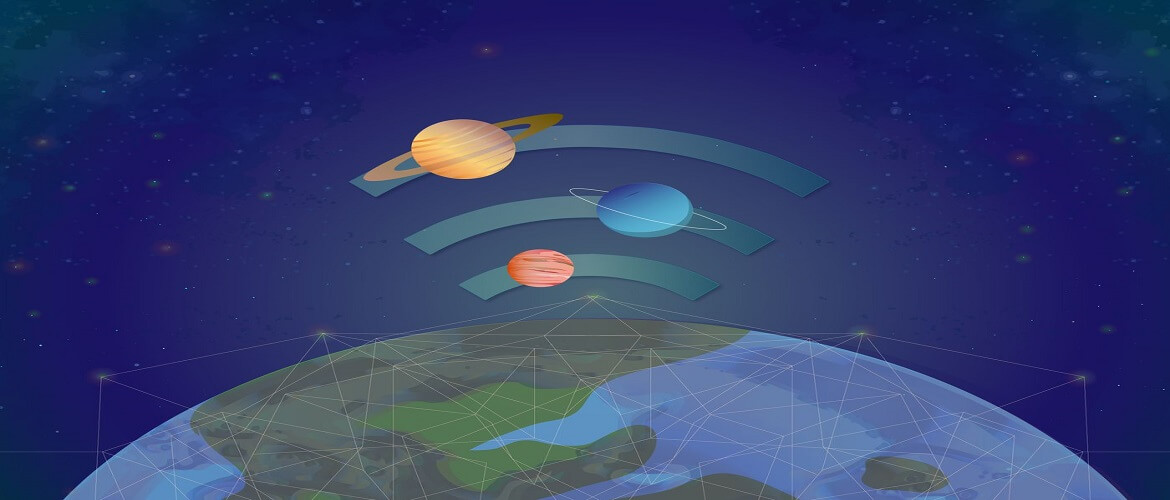The Answer Lies in Space
April 13, 2021 | Expert Insights

The Internet has become an intrinsic part of modern lives - empowering essential services, entertainment and commerce, and redefining how we communicate with one another. In fact, along with the provision of water and electricity – Internet access has effectively become the third essential utility.
This fact has only come into sharper focus during the last 12 months of the COVID 19 pandemic, when working from home and education at home have become the new normal.
In countries like India, current estimates indicate that there are close to 50,000 villages populating around 65% of the grassroots economy, without mobile or internet access. The need to provide these villages with internet access is only accelerated by the roll out of fibre/4G and 5G services across India’s vast metropolitan areas.

Pervasive internet which provides broadband access is a viable enabler of economic growth and social inclusion. The e-commerce infrastructure being put into place within India can only be maximized when the entire country has internet access.
A SPACE BASED SOLUTION
The use of satellite technologies that are ubiquitous in reach can bridge this gap significantly in the coming years. Traditionally, satellites have been used to provide internet access to rural and sub-urban areas, as well as 4G backhaul, and now 5G backhaul. In fact, countries, which have had massive fibre/4G and 5G roll outs, have, contrary to initial expectations, had an accelerated growth in internet-based satellite services.
In developed countries like USA, Japan, and Australia, universal high speed terrestrial broadband services in metro and urban areas have been catalytical towards the rapid expansion of satellite-based internet services in the sub-urban and rural populations. Internet services are becoming a ‘need’ rather than a ‘want’.
However, the deployment of satellite-based internet services has been limited in the past due to the higher cost structure involved with satellite technologies. The high costs of the end user equipment and satellite bandwidth rendered this into a niche offering and a rather unsustainable one. Telcos, using satellites for backhaul, have had to balance the business case of using a high cost backhaul technology with the number of potential subscribers utilizing a rural node.
TECHNOLOGY TO CUT COSTS
This critical cost factor is set to change in the next few years. Digital and fully flexible satellite technologies together with the introduction of Very High Throughput (VHTS) Geosynchronous Earth Orbit (GEO) satellites employing configurable multi-beam frequency re-use techniques, Medium Earth Orbit Satellites (MEO) and Low Earth Orbit (LEO) constellations will enable internet/data access through satellite at comparable rates to terrestrial services. This is particularly the case when taking into account the increased cost of 4G and 5G spectrum (through license or auction) that mobile operators must take on.
Broadcast services, so long the bedrock of satellite design, innovation and service, have ceased to be the driving factor in the satellite industry. The sole focus of VHTS GEO and MEO satellites have been the provision of low cost and more functional internet satellite services thereby making it a compelling and sustainable offering.
Each of the three types – GEO, MEO, and LEO have their own set of advantages and disadvantages in relation to internet services. It is expected that GEO and MEO will be able to offer low comparable prices compared to terrestrial services, whilst allowing for in-country gateways and termination of internet traffic along with lower cost user terminals. Conversely, LEO constellations will be able to provide services with the lowest latency albeit with a perceived higher terminal and ongoing service costs.
The key challenge and limitation going forward remains the available spectrum/frequency for each satellite system along with the greater complexity of frequency coordination that satellite operators will face with myriad platforms being planned and launched.
Pradeep Unni is CEO, Antara Spacecom. This article is written by the Synergia Research team based on insights shared by him at the round table titled ‘Empowering the Internet through space: Limitations, challenges, and the future’ on 21 January 2021.








Comments